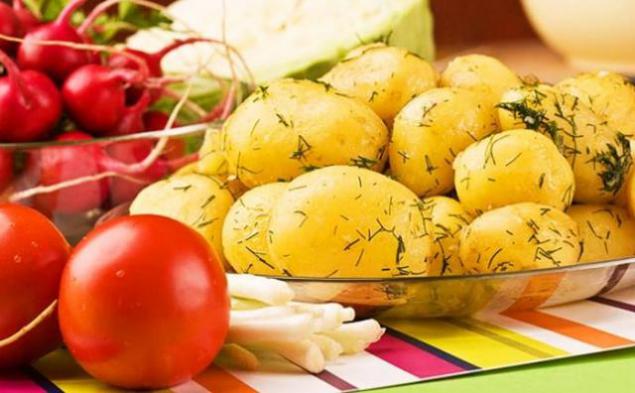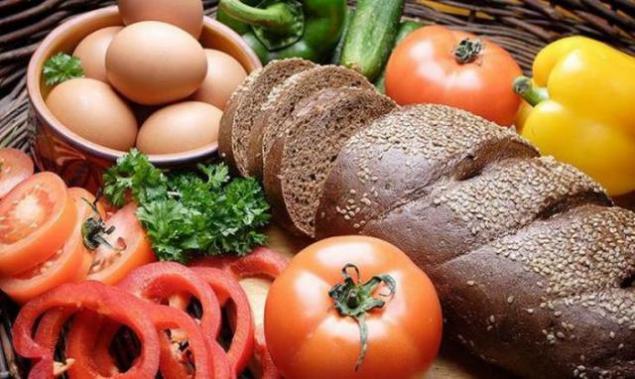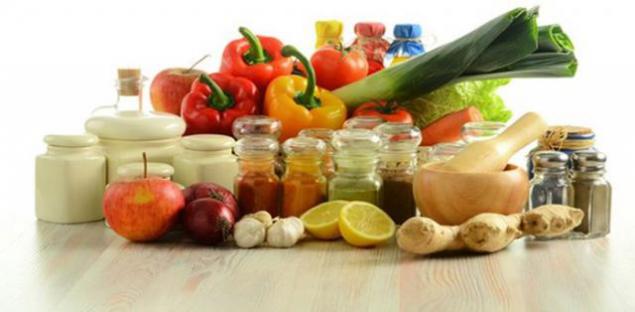666
Lie on product labels
Today I want to tell you how different foods manufacturers indicate not very accurate information on the labels of their products.

1. "Without cholesterol»
Do you think it means: safe for the heart.
What this really means: cholesterol only in animal products, and mark the absence of cholesterol, is often used in products of plant origin, and so that will never contain. Besides, a large amount of junk food does not contain cholesterol (e.g., red wine and chips), which makes them useful for the heart. In addition, studies show that dietary cholesterol does not affect blood cholesterol levels the way we thought about it a decade ago.
Alternative: eat foods with fewer processed carbohydrates and sugar - the two major culprit of cardiovascular disease.
2. Green label
Do you think it means "forward, all right, you can eat».
What this really means: nothing. Green - the inherent nature of the color, so we associate it with health benefits, even if not to do so. The study, published in the Journal of Health Communication, found that consumers are more likely to find a chocolate bar with a green label healthier food than the same bars, but white or red label - even if they have the same number of calories.
Alternative: Do not pay attention to the front of the label and check the composition on the back or side.
Anxiety symptoms: List of ingredients comprises partially hydrogenated coconut oil, palm oil, fat, or vegetable fat and / or corn syrup, high fructose.

3. "low sodium»
What this really means: food contain less sodium than the original product. Other variants of this phrase sound similar but have different values: a low-sodium or with lower sodium content (at least 25% compared to the original), a weak sodium content (by 50% compared to the original) and with a minimum content of sodium (140 mg per serving or less).
Alternative: keep in mind that any product with a high sodium content is about 20% of your daily requirement. Choose those that provide 5% or less of the daily requirement of sodium per serving - and watch out for the number of servings.
4. "With the addition of vitamins»
Do you think it means: includes all the benefits of fruits and vegetables.
What this really means: vitamins A, C, E and B are added to cereal, fruit snacks, and even sometimes in the liver. Science shows that the separation of vitamins and minerals from certain foods and adding them to the other does not imply the same effect for the health.
Alternative: try to get the vitamins, minerals and antioxidants from real, natural foods - vegetables, fruits, whole grains and lean meat.

5. "chicken without hormone»
Do you think it means: a healthy and environmentally friendly lunch.
What this really means: practically nothing. The presence of hormones in chicken or pork is not allowed, so the inscription on the labels of the lack of hormones - the truth, but the animals never give hormones.
Alternative: buy natural, environmentally friendly meat. Disadvantages? It is more expensive, and there is no guarantee that the animals were treated well.
6. "Made with sugar" or "natural sweetener»
Do you think it means: Does not a part of corn syrup, high fructose (HF CS), really bad sugar.
What this really means: This product contains a lot of sugar. Even soft drinks are composed of synthetic fructose hated because you are likely to buy them than containing more natural sugar. Nevertheless, the use of too much sugar in any form promotes accumulation of excess calories, causing weight gain, nutritionists explained.
Alternative: Check the list of ingredients, knowing that corn syrup, beet sugar, dextrose, fruit juice concentrate and malt syrup - all this sugar. Cardiologists recommend limiting sugar intake 100 calories (or 6 teaspoons) per day. Try to avoid foods with sugar in the form of one of the first three ingredients that are commonly found in desserts.

7. The mark "Whole»
Do you think this means: all whole grain foods.
What this really means: the product contains at least 8 grams of whole grains per serving. The mark 100% whole grains means that the product contains at least 16 grams of whole grains per serving. It sounds great, right? In fact, in a study it was found that many food products marked with "whole grain" have a higher content of sugar and calories than a product without the mark.
Alternative: read the composition. Look for the designation "100% whole grain wheat" or "whole wheat." Enriched or bleached ingredients? Lay back.
8. "Calories per serving (100 g)»
Do you think it means: the number of calories in the package.
What this really means: it is what is written. One catch: in the package may be present, as it is said, 100 calories per serving iced tea, but a bottle that looks like it can drink in one sitting, may include two or three portions, which leads to double or triple the number of calories consumed . Worse, the food industry may exceed the officially declared number of calories.
Alternative: always check the serving size before use. In addition, if you are trying to lose weight, let the probability that the food may contain more calories than the announced (and if your weight stood on the same spot and is not reduced, the reason may be the case).
9. "Product of organic origin»
Do you think this means: health benefits and delicious.
What this really means: at least 70% of the ingredients must be of organic origin, that the manufacturer can boast that its product is "made with organic ingredients" and contain 95% organic ingredients, to use the designation "organic product". But organic does not mean low calorie. The study showed that people think organic foods contain up to 24% fewer calories and, in some cases, are more nutritious. Really, though, organic snacks usually contain more calories than their traditional counterparts.
Alternative: Although reasonable to buy organic produce, but organic snacks - potato chips, fruit snacks, candy - just a waste of money.
10. "Now, 30% less fat»
Do you think this means: fewer fat will help me lose weight.
What this really means: the manufacturers replace the fat with something else, such as sugar. It retains the flavor of food. But added, as a rule, more processed ingredients, making the low-fat version of the less useful than the original.
Alternative: Choose foods that contain fats that are useful for heart disease (such as monounsaturated fats found in avocados, chocolate and omega-3 fatty fish), but in reasonable quantities.

From

1. "Without cholesterol»
Do you think it means: safe for the heart.
What this really means: cholesterol only in animal products, and mark the absence of cholesterol, is often used in products of plant origin, and so that will never contain. Besides, a large amount of junk food does not contain cholesterol (e.g., red wine and chips), which makes them useful for the heart. In addition, studies show that dietary cholesterol does not affect blood cholesterol levels the way we thought about it a decade ago.
Alternative: eat foods with fewer processed carbohydrates and sugar - the two major culprit of cardiovascular disease.
2. Green label
Do you think it means "forward, all right, you can eat».
What this really means: nothing. Green - the inherent nature of the color, so we associate it with health benefits, even if not to do so. The study, published in the Journal of Health Communication, found that consumers are more likely to find a chocolate bar with a green label healthier food than the same bars, but white or red label - even if they have the same number of calories.
Alternative: Do not pay attention to the front of the label and check the composition on the back or side.
Anxiety symptoms: List of ingredients comprises partially hydrogenated coconut oil, palm oil, fat, or vegetable fat and / or corn syrup, high fructose.

3. "low sodium»
What this really means: food contain less sodium than the original product. Other variants of this phrase sound similar but have different values: a low-sodium or with lower sodium content (at least 25% compared to the original), a weak sodium content (by 50% compared to the original) and with a minimum content of sodium (140 mg per serving or less).
Alternative: keep in mind that any product with a high sodium content is about 20% of your daily requirement. Choose those that provide 5% or less of the daily requirement of sodium per serving - and watch out for the number of servings.
4. "With the addition of vitamins»
Do you think it means: includes all the benefits of fruits and vegetables.
What this really means: vitamins A, C, E and B are added to cereal, fruit snacks, and even sometimes in the liver. Science shows that the separation of vitamins and minerals from certain foods and adding them to the other does not imply the same effect for the health.
Alternative: try to get the vitamins, minerals and antioxidants from real, natural foods - vegetables, fruits, whole grains and lean meat.

5. "chicken without hormone»
Do you think it means: a healthy and environmentally friendly lunch.
What this really means: practically nothing. The presence of hormones in chicken or pork is not allowed, so the inscription on the labels of the lack of hormones - the truth, but the animals never give hormones.
Alternative: buy natural, environmentally friendly meat. Disadvantages? It is more expensive, and there is no guarantee that the animals were treated well.
6. "Made with sugar" or "natural sweetener»
Do you think it means: Does not a part of corn syrup, high fructose (HF CS), really bad sugar.
What this really means: This product contains a lot of sugar. Even soft drinks are composed of synthetic fructose hated because you are likely to buy them than containing more natural sugar. Nevertheless, the use of too much sugar in any form promotes accumulation of excess calories, causing weight gain, nutritionists explained.
Alternative: Check the list of ingredients, knowing that corn syrup, beet sugar, dextrose, fruit juice concentrate and malt syrup - all this sugar. Cardiologists recommend limiting sugar intake 100 calories (or 6 teaspoons) per day. Try to avoid foods with sugar in the form of one of the first three ingredients that are commonly found in desserts.

7. The mark "Whole»
Do you think this means: all whole grain foods.
What this really means: the product contains at least 8 grams of whole grains per serving. The mark 100% whole grains means that the product contains at least 16 grams of whole grains per serving. It sounds great, right? In fact, in a study it was found that many food products marked with "whole grain" have a higher content of sugar and calories than a product without the mark.
Alternative: read the composition. Look for the designation "100% whole grain wheat" or "whole wheat." Enriched or bleached ingredients? Lay back.
8. "Calories per serving (100 g)»
Do you think it means: the number of calories in the package.
What this really means: it is what is written. One catch: in the package may be present, as it is said, 100 calories per serving iced tea, but a bottle that looks like it can drink in one sitting, may include two or three portions, which leads to double or triple the number of calories consumed . Worse, the food industry may exceed the officially declared number of calories.
Alternative: always check the serving size before use. In addition, if you are trying to lose weight, let the probability that the food may contain more calories than the announced (and if your weight stood on the same spot and is not reduced, the reason may be the case).
9. "Product of organic origin»
Do you think this means: health benefits and delicious.
What this really means: at least 70% of the ingredients must be of organic origin, that the manufacturer can boast that its product is "made with organic ingredients" and contain 95% organic ingredients, to use the designation "organic product". But organic does not mean low calorie. The study showed that people think organic foods contain up to 24% fewer calories and, in some cases, are more nutritious. Really, though, organic snacks usually contain more calories than their traditional counterparts.
Alternative: Although reasonable to buy organic produce, but organic snacks - potato chips, fruit snacks, candy - just a waste of money.
10. "Now, 30% less fat»
Do you think this means: fewer fat will help me lose weight.
What this really means: the manufacturers replace the fat with something else, such as sugar. It retains the flavor of food. But added, as a rule, more processed ingredients, making the low-fat version of the less useful than the original.
Alternative: Choose foods that contain fats that are useful for heart disease (such as monounsaturated fats found in avocados, chocolate and omega-3 fatty fish), but in reasonable quantities.

From























